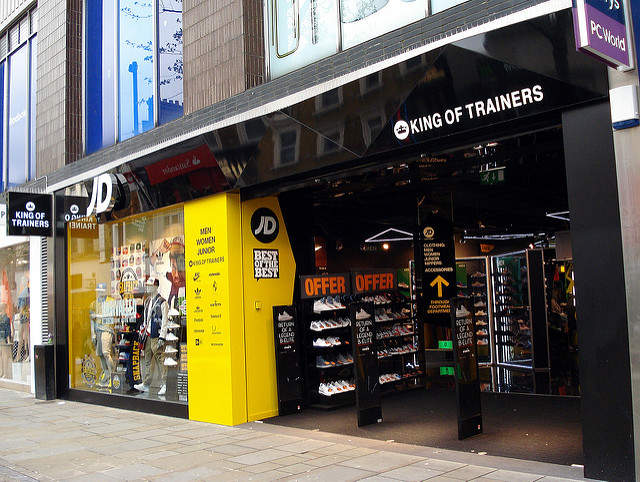
5 Trends Shaping the Sports Retail Market
The company’s success has been mostly attributed to the growing trend of athleisure, which the brand has been profiting from over the last two years. Wholesale sales of sporting goods in the US reached $90.22bn in 2017, the highest figure to date and a $6bn increase from 2014. But what are the trends driving the sports retailing market?
1. Athleisure
The athleisure trend is a bright spot in sportswear right now, and responsible for much of the category’s growth in recent years. The trend is especially driven by younger consumers and their desire to appear fit and healthy and to ‘look the part’.
While typically sports retail is synonymous with sporting giants such as Adidas, Nike or Puma, the trend has also been embraced by luxury and high street retailers. Brands such as H&M, Zara, Asos and Topshop have introduced lines with a dedicated space for their own brand of athleisure. Last year, the demand for sports leisure styles increased by 16% to $9.6bn in sales, while sales of performance apparel dropped by 10% to $7.4bn.
2. Personalisation
Adidas, Converse and Nike offer customers an ability to design their own trainers or jumpers choosing everything from colour through to materials and laces. However, personalisation in sports stores is also about innovative technologies, such as gait analysis treadmills for customers to source the perfect trainer for their requirements, or laser body scans that can help determine a more precise fit for clothing items.
Adidas believes that by offering more personalisation to customers it will not only be able to respond to fickle fashion trends far quicker than its rivals, but sell more of its products at full price.
3. Sustainable merchandising practices
With the growth of environmental consciousness among consumers, sports retailing brands are experiencing a growing demand for eco-friendly raw materials in sports equipment. For example, Dixon Golf’s eco-friendly water-soluble golf balls.
Meanwhile sportswear brands including Ethletic—a German vegan and sustainable athletic brand —are replacing traditional materials in the manufacturing process with organic cotton, water-based adhesives, and recycled plastic materials.
Adidas claims to be ‘setting new standards regarding the functionality of renewable textiles’ with the new prototype trainers made of Biosteel fibre and silk biopolymers, which are biodegradable and can be dissolved using a special enzyme solution.
4. Retro sportswear
Retro sportswear made a comeback in 2017 with tearaway joggers and high-collared jackets with oversized logos. A key factor is the continued relaxation of workplace dress codes, as well as the modern interpretation of luxury.
Nostalgia is a driving force of this trend. A 2016 menswear trade show, Pitti Uomo, was the start of the retro sportswear wave for a number of brands, including Italian company Kappa.
Retro sportswear brands have gained recognition from influencers such as Tyga, Brooklyn Beckham and the Jenner sisters. To jump on the trend, online luxury fashion retailer Farfetch and lifestyle news platform Buro 24/7 have teamed up with seven emerging designers to launch an exclusive sportswear capsule collection that reimagines the football kit in tribute to the World Cup for the 2018 Buro Fashion Forward Initiative.
5. Brand partnerships
Fitness brands are in the middle of a transformation into lifestyle as they look to build loyalty and set themselves apart. These brands are not only providing consumers with the right gear to get in shape and participate in sports but also motivate consumers to become more active.
Under Armour is building brand loyalty using apps. The company has acquired several popular fitness apps, including MyFitnessPal and MapMyRun. While these apps help users get fit, they also subtly reinforce Under Armour as the brand to help them do so. Meanwhile, Rebook uses ads, CrossFit sponsorship and product selection to attract regular people looking to get more fit every day.



